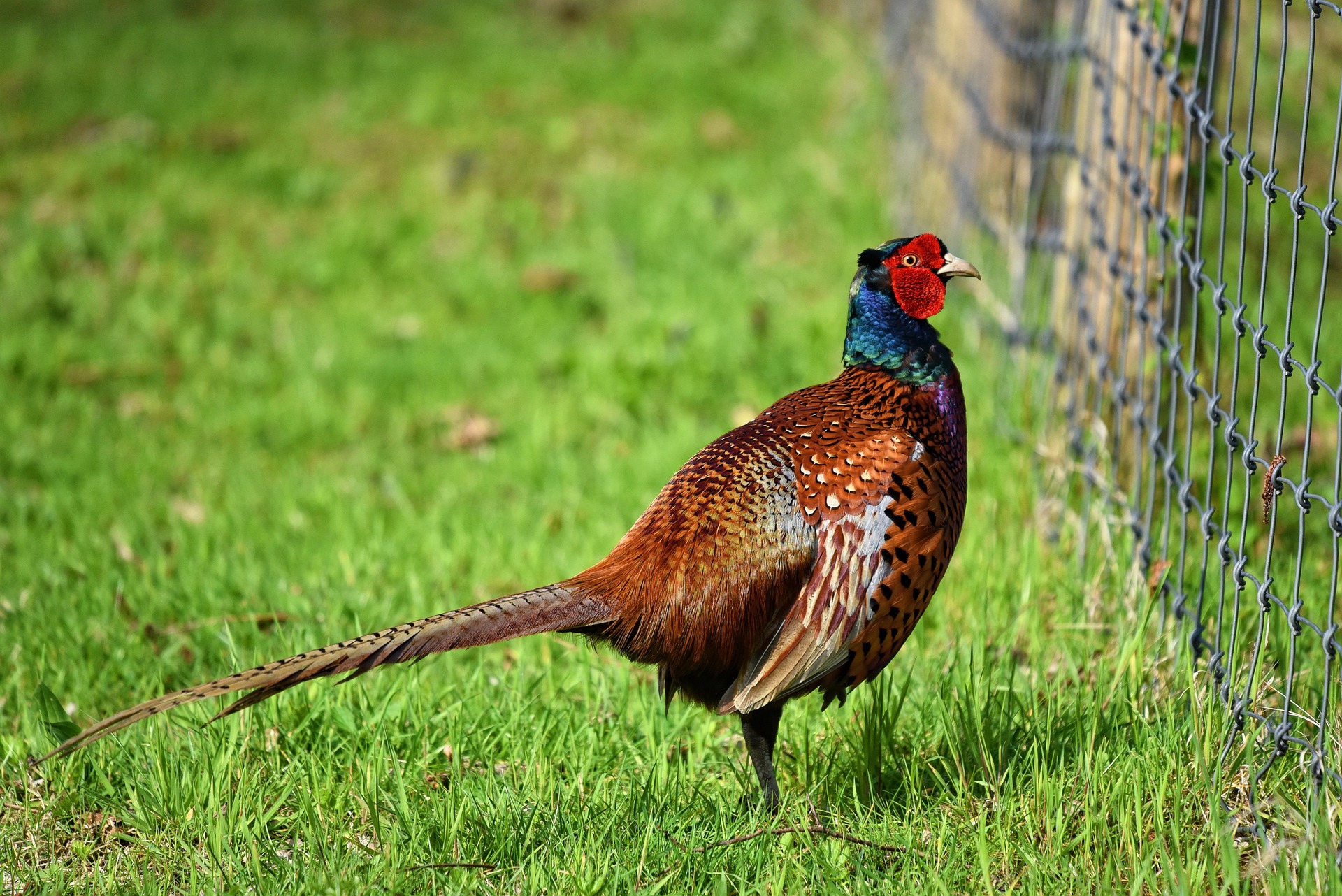Pheasant (Fasan)


Characteristics:
The Common Pheasant is a large and colourful game bird (length 70–90 cm, including the long tail).
- Male: Striking metallic plumage with a green head, bright red facial patches, and a long, pointed tail. Most males have a white neck ring, though this varies between subspecies.
- Female: Much smaller and mottled brown, providing excellent camouflage in vegetation.
Habitat:
Originally native to Asia, the pheasant has been introduced throughout Europe, including Sweden. It thrives in farmland areas with hedgerows, small woodlands, and field edges, often near water. In Sweden, it is most common in southern and central regions, such as Skåne, Halland, and Mälardalen.
Behaviour:
The pheasant is primarily a ground-dwelling bird. It walks and scratches in the soil for food, flying only when startled — with rapid wingbeats and a noisy take-off. During winter, pheasants often gather in small flocks.
Diet:
The pheasant feeds on seeds, grains, berries, insects, earthworms, and small snails. In summer, insects are especially important for chicks.
Reproduction:
Breeding occurs in April–May. The female lays 8–15 eggs in a shallow ground nest, usually well hidden in tall grass. Incubation lasts about 23–25 days, and the chicks are precocial, leaving the nest shortly after hatching.
Migration:
The pheasant is non-migratory (resident), though individuals may move short distances depending on weather and food availability.
Distribution:
Widespread across Europe and Asia, and common in southern and central Sweden. Many Swedish populations are maintained through game release programs for hunting.
Hunting:
The Common Pheasant is a game bird in Sweden and may be hunted from 1 October to 31 January. Hunting is often conducted with pointing dogs, flushing dogs or in driven hunts with retrievers.
Firearm class (Sweden):
Hunted with a shotgun, typically using pellet size no. 5–7.
Think for the hunting exam:
- Largest field game bird in Sweden.
- Male: colourful with long tail and red facial patches.
- Female: brown and well camouflaged.
- Lives in farmland and field edges.
- Eats seeds, berries, and insects.
- Game species – hunted with shotgun.
